10 Ways to Tell If You’re Overwatering Your Lavender
Lavender does not enjoy sitting in wet soil, and it will show clear signs when something is off. Moisture problems are easy to miss at first, but they can lead to bigger issues. If your lavender seems less vibrant, there is likely a reason. Taking a closer look at the plant’s condition can reveal a lot. Stay with us as we break down what to notice and what steps you can take next. A few small changes can help your lavender thrive again.
This post may contain affiliate links, which helps keep this content free. Please read our disclosure for more info.
Drooping or Wilting Leaves
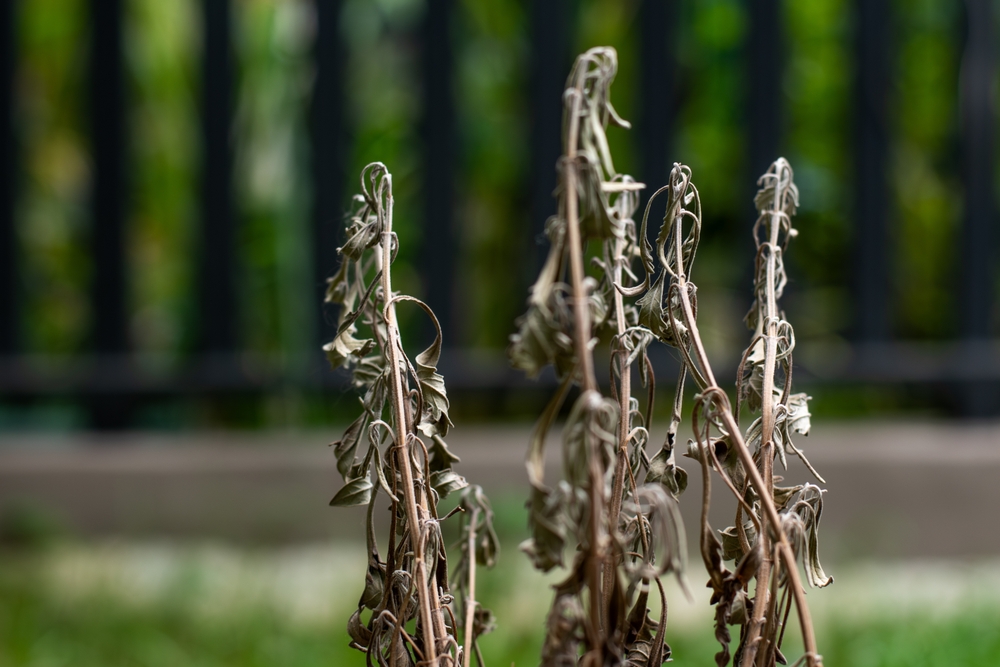
One of the first signs of overwatering is when the leaves start to droop. Even though the soil is wet, the plant looks limp and lifeless. This happens because too much moisture cuts off oxygen to the roots. The plant cannot take up nutrients properly.
To fix this, stop watering immediately and let the soil dry out. Make sure the pot or garden bed has good drainage. Trim away any severely wilted stems to help the plant focus on recovery. Moving the lavender to a sunnier spot may also help it bounce back.
Yellowing Leaves
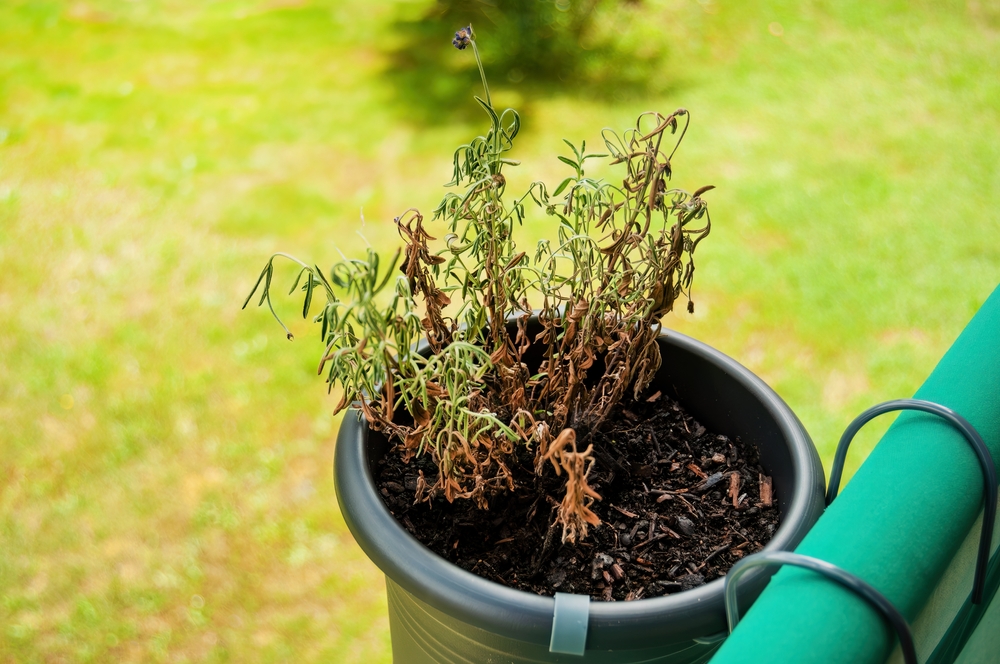
Yellow leaves are a sign that the plant is under stress, often from soggy roots. When lavender gets too much water, the roots struggle to take in what the plant needs. This leads to discoloration and poor growth. It usually begins with the lower leaves.
Allow the soil to dry completely before watering again. Use your finger to check moisture levels below the surface. If the soil feels damp, wait a few more days. It helps to use sandy or well-draining soil to prevent future issues.
Mushy or Blackened Roots
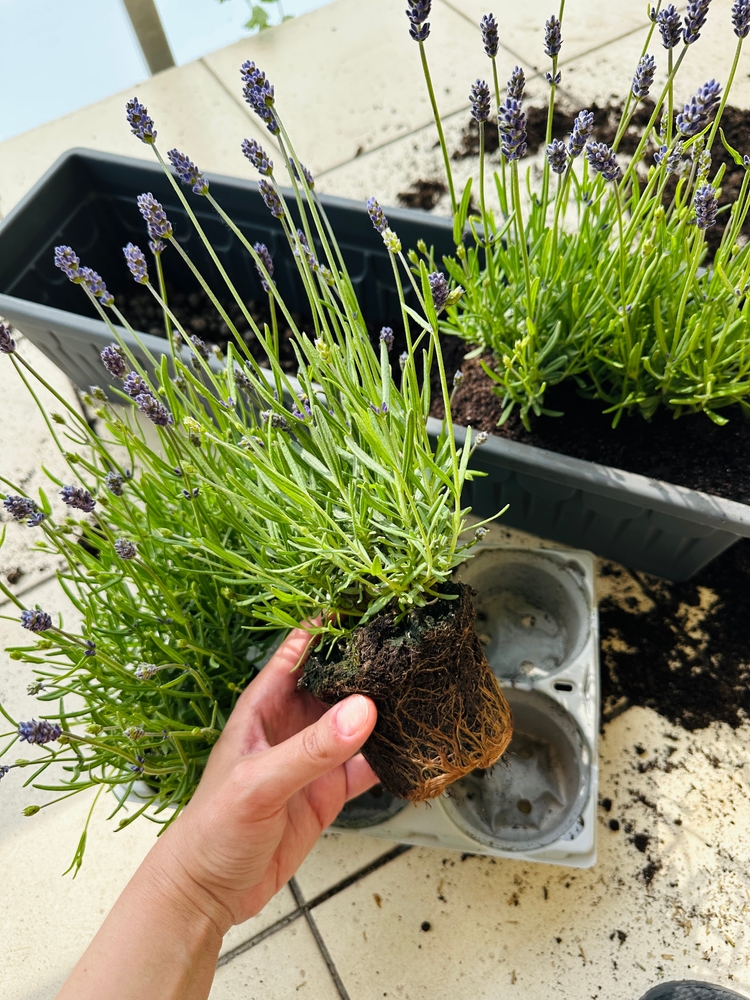
If you gently unpot the plant and notice black, mushy roots, it means root rot has set in. This condition is often caused by standing water around the root zone. Healthy roots should look pale and firm. Once rot begins, the plant cannot take in water properly.
Remove the plant from its pot and cut off any affected roots. Use sterilized scissors to avoid spreading infection. Repot in fresh, dry soil with good drainage. Water lightly and watch the plant over the next several days.
Soil That Stays Wet Too Long
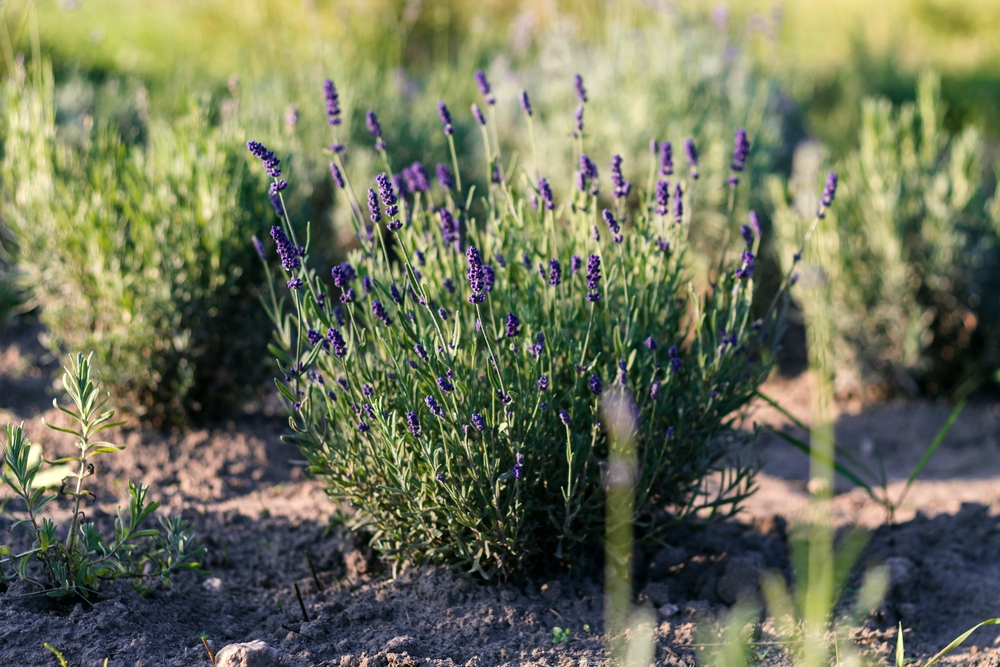
Lavender prefers dry soil and does not like to sit in water. If the soil feels damp several days after watering, it is holding too much moisture. This can smother the roots and encourage fungal problems. Wet soil is one of the main causes of plant decline.
Consider switching to a gritty mix that drains better. Add materials like perlite, sand, or small rocks to the potting soil. Make sure drainage holes are clear and working. Tilt outdoor pots slightly to help water run off.
Leaves Falling Off Easily
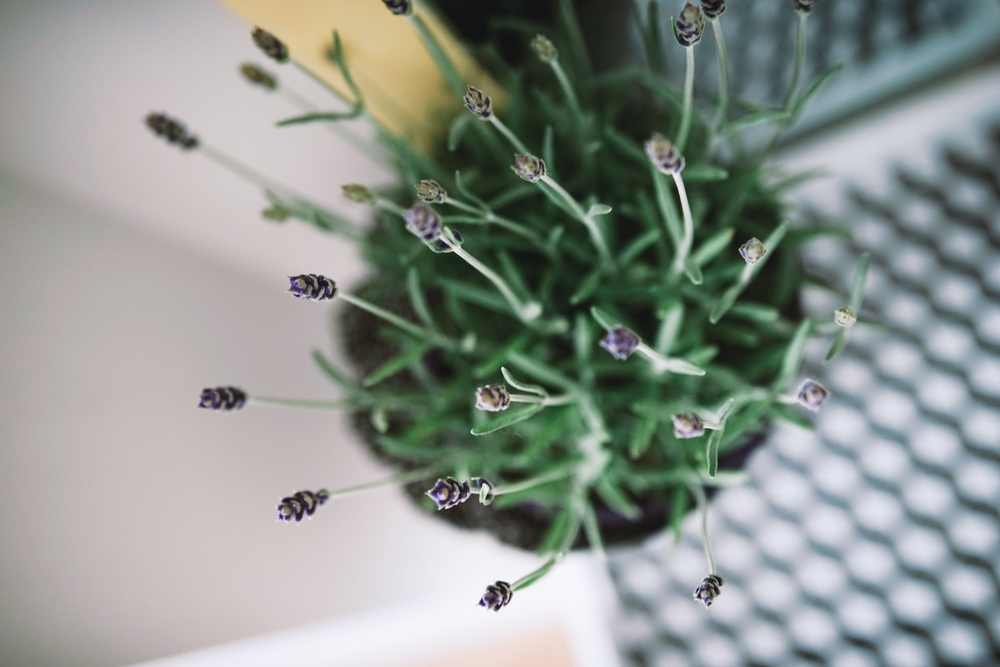
When lavender gets too much water, it may start to drop leaves. The stems may still look fine, but leaves fall with the lightest touch. This is a stress response as the plant struggles to survive. Moisture overload weakens the connection between stems and leaves.
Reduce watering and avoid splashing water on the foliage. Keep the plant in a dry, breezy location. Pick up fallen leaves and keep the area clean to prevent fungus. Give the plant time to adjust as it dries out.
Unusual Odor from Soil or Plant Base
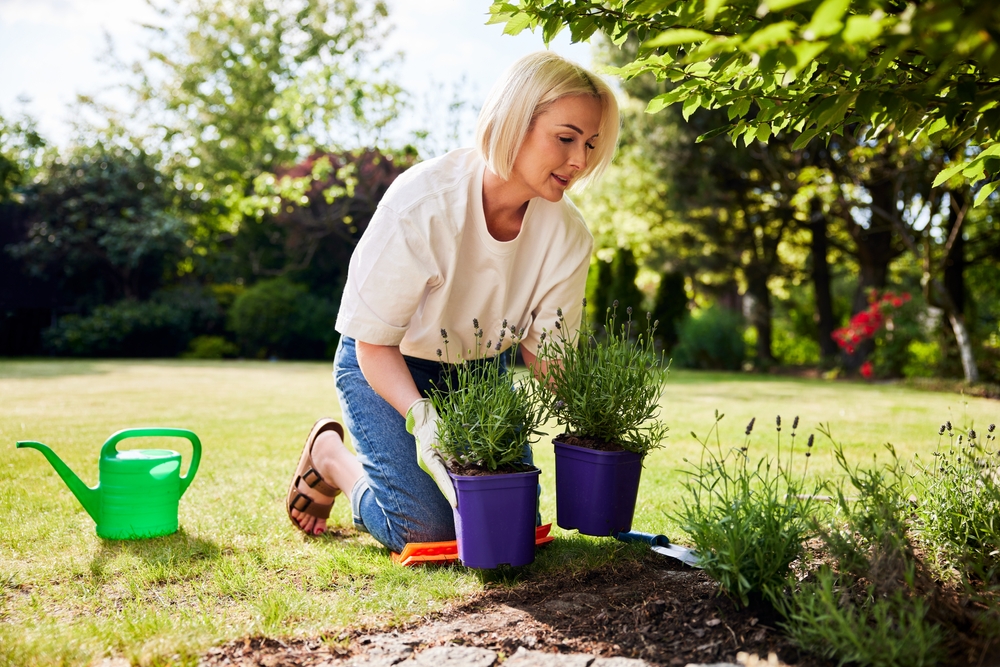
Overwatered soil often starts to smell bad, like mildew or decay. This odor comes from rotting roots or fungal growth. Lavender usually smells fresh and pleasant, so any foul scent should be a warning sign. It means something is going wrong below the surface.
Take action by removing the plant from its container. Rinse the roots and check for rot or slime. Repot in clean, dry soil and reduce watering frequency. Keep the plant in a location with plenty of air circulation.
Stunted Growth or No New Growth

If your lavender stops growing, too much water could be the cause. Constant wetness limits nutrient uptake and weakens the plant. You may notice no new buds, flowers, or shoots. The plant just sits there without making progress.
Let the soil dry out fully between watering sessions. Add loose, quick-draining soil around the base. Remove dead or soggy parts to encourage healthier growth. Monitor closely for changes as the plant recovers.
Soft, Spongy Stems
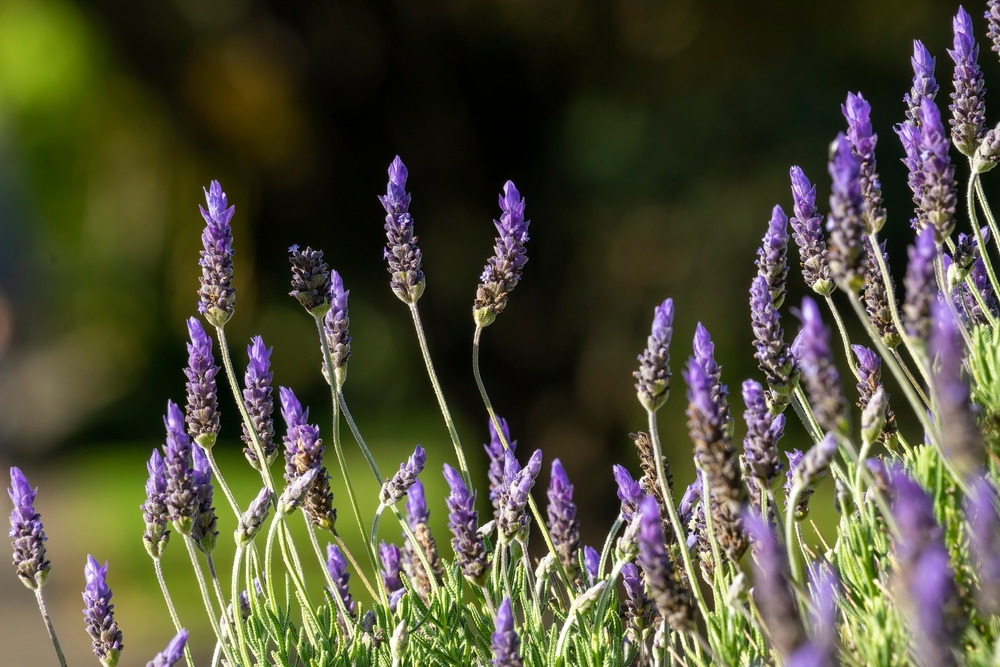
Stems that feel soft or bend easily could be damaged by excess water. This happens when moisture builds up inside the tissues. The plant loses its structure and can no longer support itself well. It may even snap when touched.
Cut back any soft stems to where the wood feels firm. Use clean garden scissors and discard the cuttings. Avoid watering until the plant looks more stable. Give the plant time to dry out and rebuild strength.
Wilting Despite Wet Soil
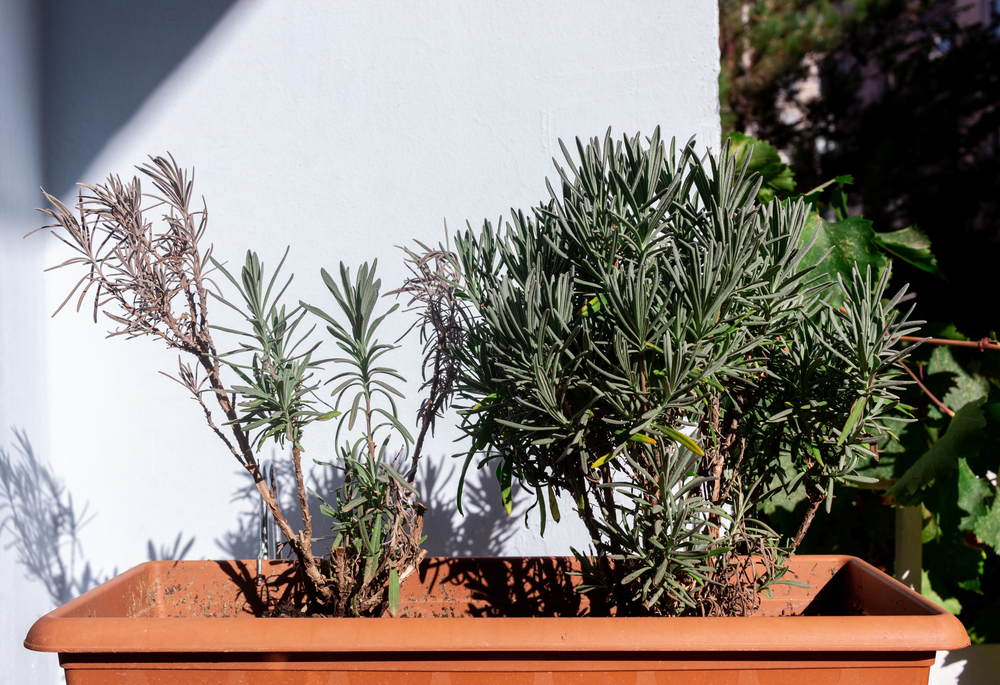
A lavender plant that wilts even when the soil is moist is most likely overwatered. This may seem confusing, but it happens when roots are too damaged to function. Instead of taking in water, they shut down. The plant then wilts from lack of hydration.
Let the soil dry out before watering again. Remove damaged roots if needed and repot the plant. Keep the pot out of the shade to encourage evaporation. Watch closely for signs of new growth before resuming your regular care routine.
No Scent or Faded Fragrance
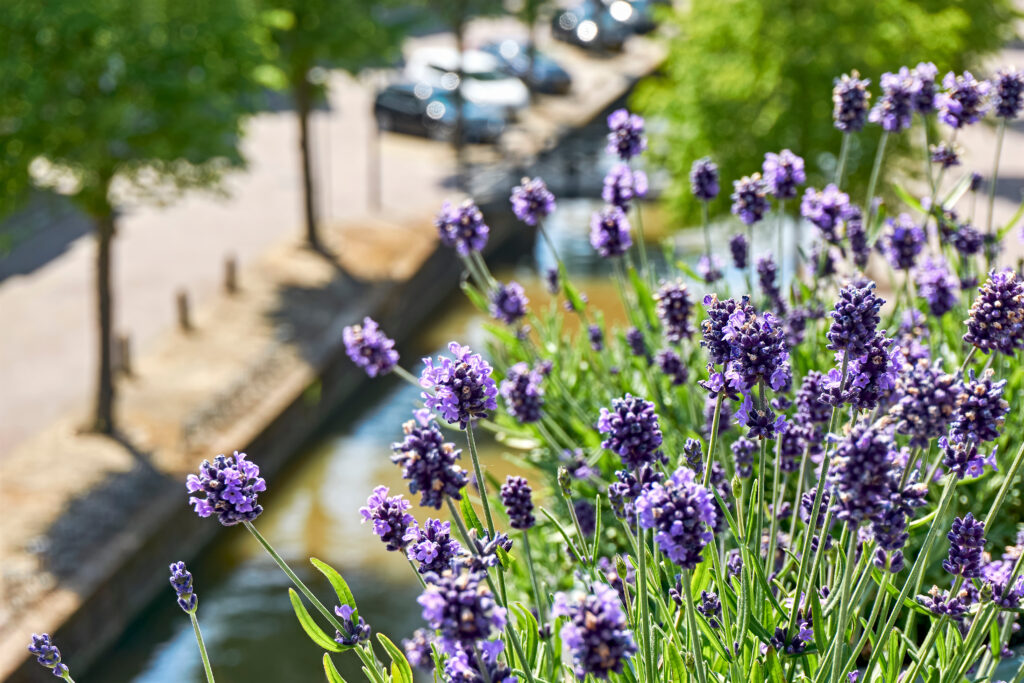
Lavender is prized for its strong fragrance, so a weak or missing scent is a problem. Overwatered lavender often loses its aroma. This is due to stress or rotting tissues that affect the essential oils. A healthy lavender plant should smell sweet and clean.
Dry out the soil and remove any soggy or damaged parts. Place the plant where it receives full sunlight. Do not water again until the soil feels dry several inches down. A stronger scent may return as the plant recovers.
Keeping lavender healthy starts with understanding how it reacts to too much water. Once you recognize the signs early, it becomes easier to make simple changes.
This article originally appeared on Avocadu.
